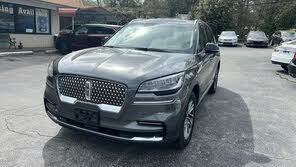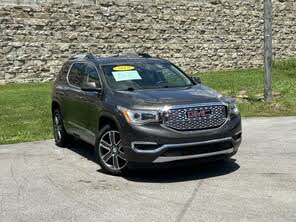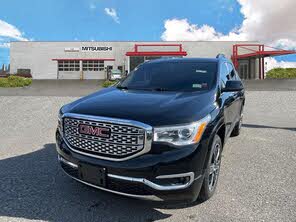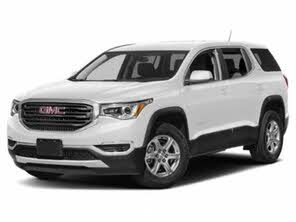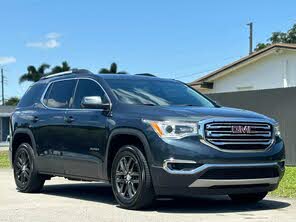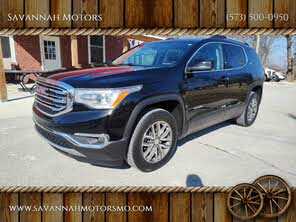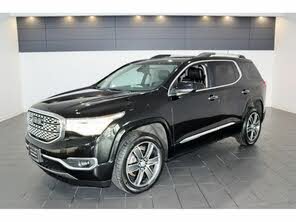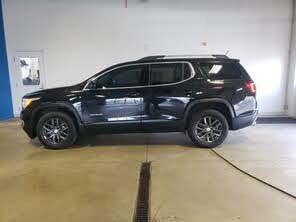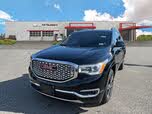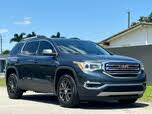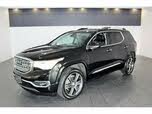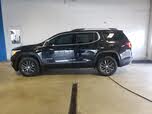2019 GMC Acadia vs 2020 Lincoln Aviator
CarGurus highlights
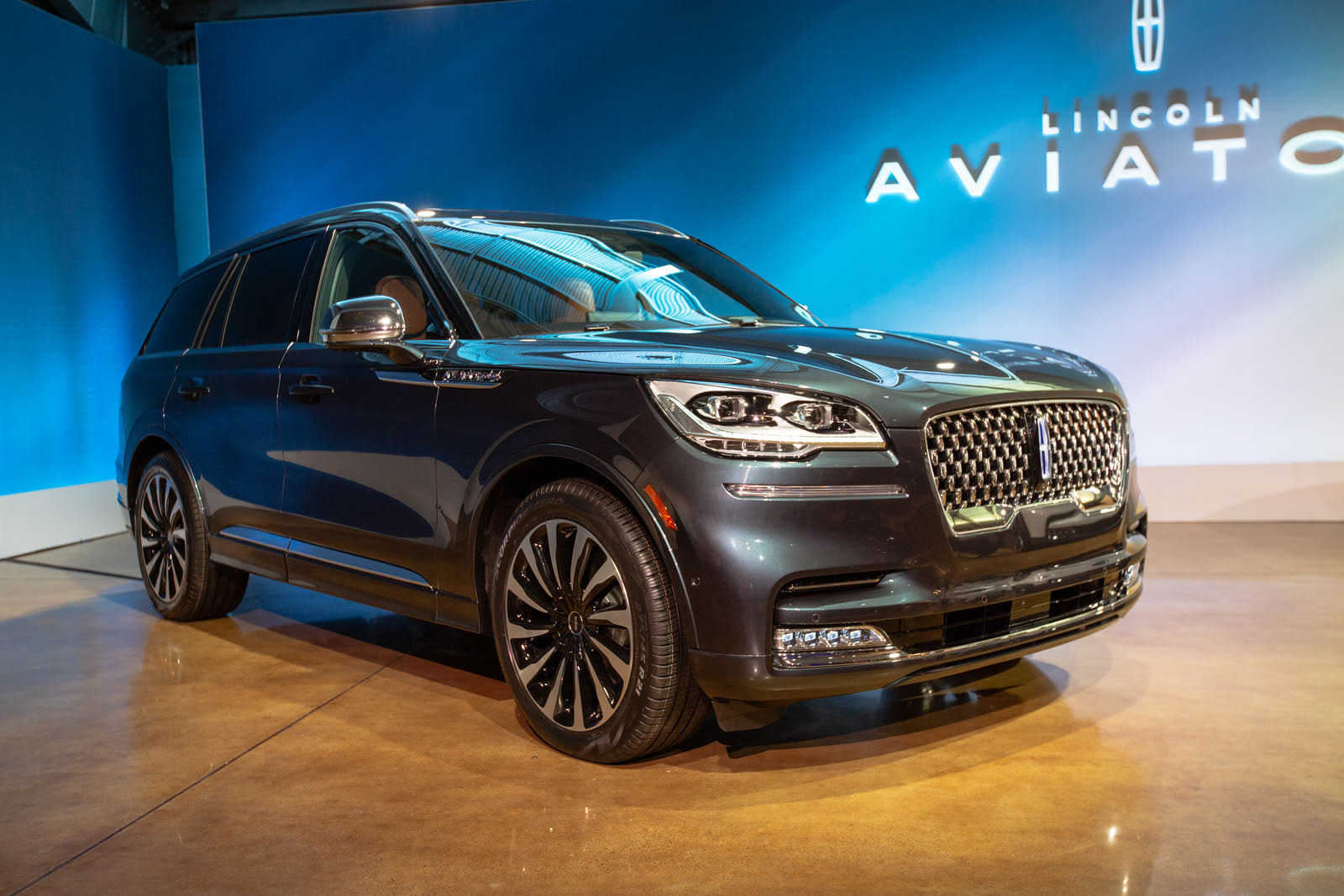
According to CarGurus experts, the overall rating for the 2019 GMC Acadia is 8.0 out of 10, while the 2020 Lincoln Aviator scores 8.2 out of 10. Given these ratings, the Lincoln Aviator represents the better overall choice. It excels in areas of luxury, performance, and technology, providing a more refined driving experience and superior standard safety features. The Aviator’s balanced approach to luxury and function makes it a standout midsize luxury SUV.
Choose the 2020 Lincoln Aviator if:
Shop Now- You want a luxurious driving experience with top-notch interior materials and advanced technology.
- Performance is a priority, and you’re attracted to the powerful twin-turbo V6 or the hybrid’s impressive combined output.
- Comprehensive standard safety features and sophisticated driver-assistance systems are essential for your peace of mind.
Choose the 2019 GMC Acadia if:
Shop Now- You prefer a balance of athletic styling and upscale features without breaking the bank.
- You need a versatile SUV with decent off-road capabilities and multiple driving modes.
- Storage practicality is a priority, and you appreciate interior space designed for everyday utility.
Overview | |
MSRP$29,000 | MSRP$51,100 |
Average price$22,896 | Average price$39,480 |
Listings1312 | Listings543 |
Ratings & Reviews | |
User Reviews | User Reviews |
Expert reviews8.0 out of 10 | Expert reviews8.2 out of 10 |
Pros
| |
2019 GMC Acadia Reviews SummaryShoppers have many options when they want a family vehicle, but most look to the 3-row midsize SUV, rather than the minivan, as the de facto family hauler. But not all 3-row SUVs are created equal, and that’s a good thing because families have different needs. Old-school, full-size SUVs like the Chevrolet Suburban and Tahoe might be overkill for getting the kids to soccer practice, but they're ideal when it comes to towing a boat or camper trailer while on a road trip. On the other end of the spectrum, a compact SUV such as the Volkswagen Tiguan is far more practical for cities and has an optional third row. For many families, that third row won’t always be occupied, so it shouldn't detract from other areas of the vehicle, cut into cargo space, or break the bank. General Motors enjoys the luxury of multiple, somewhat overlapping brands and utilizes this overlap to offer two kinds of 3-row SUVs. The Chevrolet Traverse is one example; it feels like a stretched-out midsize SUV, almost like a downsized Tahoe. The 2019 GMC Acadia rides on the same platform as the Traverse but feels like a completely different vehicle. It has a shorter wheelbase and a more upscale cabin, resulting in a midsize SUV that feels less like a family hauler and more like something special and unique. But 3-row midsize SUVs compete in an extremely crowded segment against some of the most popular vehicles on the market, including the Honda Pilot, Toyota Highlander, Mazda CX-9, and Subaru Ascent, just to name a few. So how does the Acadia stack up when it comes to balancing 3-row seating capacity and overall usability? Read on to find out and learn which trim of the Acadia CarGurus recommends. | |
2020 Lincoln Aviator Reviews SummaryThe heyday for Lincoln was more than a half-century ago. Those postwar years of prosperity and optimism were the perfect time for cars like the Continental and others. They delivered comfort and luxury, wrapped in midcentury modern styling. Even as recently as the 1990s, Lincoln was still a popular brand, riding the SUV craze with its Navigator. But after the turn of the century, Lincoln lost its ability to create new designs and looked inward and backward. Sure, retro-themed cars like the redesigned Mustang, PT Cruiser, and Chevy HHR had turned some heads, but none of those came from luxury brands. The BMWs and Mercedes of the world were all looking forward and pushing the envelope for contemporary automotive design. Meanwhile, Lincoln offered the MKX, which was based on the Ford Edge and featured ’66 Continental styling. Neat in a vacuum, but off-base compared to the modern luxury market. This experimental phase with various retro looks coincided with the move to the MK-# alphabet-soup naming convention and big improvements in the Ford lineup, where top-end trims of the Fusion overlapped with an entry-level trim of the MKZ. The combination left Lincoln a confusing, anonymous afterthought in the modern luxury game. But Lincoln is finally ready to change all that. It has a new cohesive design language, its focus is once again on luxury, and the three-letter naming convention that never meant anything to anyone other than Lincoln marketers is gone. The brand led with the 2017 Continental and 2018 Navigator, which are each impressive in their own right. But the company's lineup is growing and now includes the all-new 2020 Lincoln Aviator. Named after a luxury variant of the 2002-2005 Ford Explorer, this new Aviator is also based on the contemporary Explorer platform, but it's a luxury vehicle in its own right. Much of the success of the Lincoln brand may hinge on this midsize, 3-row luxury SUV, so you need to consider its competition, such as the Audi Q7, Infiniti QX60, and all-new Cadillac XT6. Read on to learn if Lincoln’s take on luxury will stand out in a crowded competitive field. | |
Popular Features & Specs | |
Engine2.5L 193 hp I4 | Engine3.0L 400 hp V6 |
Drive TrainFWD | Drive TrainRWD |
Seating Capacity7 | Seating Capacity7 |
Horsepower193 hp @ 6300 rpm | Horsepower |
MPG City21 | MPG City18 |
MPG Highway26 | MPG Highway26 |
Engine | |
Engine Name2.5L 193 hp I4 | Engine Name3.0L 400 hp V6 |
Torque188 lb-ft @ 4400 rpm | Torque |
Horsepower193 hp @ 6300 rpm | Horsepower |
DrivetrainFWD | DrivetrainRWD |
Fuel Economy | |
MPG City21 | MPG City18 |
MPG Highway26 | MPG Highway26 |
Interior | |
Seating Capacity7 | Seating Capacity7 |
Safety | |
Front Crash Overall5 | Front Crash Overall5 |
Side Crash Overall5 | Side Crash Overall5 |
Dimensions & Capacity | |
Cargo Space12.8 cu ft | Cargo Space18.3 cu ft |
Curb Weight3879 lbs | Curb Weight4764 lbs |
Height66.0 in | Height69.8 in |
Length193.6 in | Length199.3 in |
Width75.4 in | Width89.9 in |
Wheelbase112.5 in | Wheelbase119.1 in |
Maximum Payload2122 lbs | Maximum Payload |
Number of doors4 | Number of doors4 |
CarGurus highlights

According to CarGurus experts, the overall rating for the 2019 GMC Acadia is 8.0 out of 10, while the 2020 Lincoln Aviator scores 8.2 out of 10. Given these ratings, the Lincoln Aviator represents the better overall choice. It excels in areas of luxury, performance, and technology, providing a more refined driving experience and superior standard safety features. The Aviator’s balanced approach to luxury and function makes it a standout midsize luxury SUV.
Choose the 2020 Lincoln Aviator if:
Shop Now- You want a luxurious driving experience with top-notch interior materials and advanced technology.
- Performance is a priority, and you’re attracted to the powerful twin-turbo V6 or the hybrid’s impressive combined output.
- Comprehensive standard safety features and sophisticated driver-assistance systems are essential for your peace of mind.
Choose the 2019 GMC Acadia if:
Shop Now- You prefer a balance of athletic styling and upscale features without breaking the bank.
- You need a versatile SUV with decent off-road capabilities and multiple driving modes.
- Storage practicality is a priority, and you appreciate interior space designed for everyday utility.
Overview | ||
MSRP | $29,000 | $51,100 |
Average price | $22,896 | $39,480 |
Listings | ||
Ratings & Reviews | ||
User reviews | 4.5 | 4.5 |
Expert reviews | 8.0 out of 10Read full review | 8.2 out of 10Read full review |
Pros & cons | Pros
| |
Summary | Shoppers have many options when they want a family vehicle, but most look to the 3-row midsize SUV, rather than the minivan, as the de facto family hauler. But not all 3-row SUVs are created equal, and that’s a good thing because families have different needs. Old-school, full-size SUVs like the Chevrolet Suburban and Tahoe might be overkill for getting the kids to soccer practice, but they're ideal when it comes to towing a boat or camper trailer while on a road trip. On the other end of the spectrum, a compact SUV such as the Volkswagen Tiguan is far more practical for cities and has an optional third row. For many families, that third row won’t always be occupied, so it shouldn't detract from other areas of the vehicle, cut into cargo space, or break the bank. General Motors enjoys the luxury of multiple, somewhat overlapping brands and utilizes this overlap to offer two kinds of 3-row SUVs. The Chevrolet Traverse is one example; it feels like a stretched-out midsize SUV, almost like a downsized Tahoe. The 2019 GMC Acadia rides on the same platform as the Traverse but feels like a completely different vehicle. It has a shorter wheelbase and a more upscale cabin, resulting in a midsize SUV that feels less like a family hauler and more like something special and unique. But 3-row midsize SUVs compete in an extremely crowded segment against some of the most popular vehicles on the market, including the Honda Pilot, Toyota Highlander, Mazda CX-9, and Subaru Ascent, just to name a few. So how does the Acadia stack up when it comes to balancing 3-row seating capacity and overall usability? Read on to find out and learn which trim of the Acadia CarGurus recommends. | The heyday for Lincoln was more than a half-century ago. Those postwar years of prosperity and optimism were the perfect time for cars like the Continental and others. They delivered comfort and luxury, wrapped in midcentury modern styling. Even as recently as the 1990s, Lincoln was still a popular brand, riding the SUV craze with its Navigator. But after the turn of the century, Lincoln lost its ability to create new designs and looked inward and backward. Sure, retro-themed cars like the redesigned Mustang, PT Cruiser, and Chevy HHR had turned some heads, but none of those came from luxury brands. The BMWs and Mercedes of the world were all looking forward and pushing the envelope for contemporary automotive design. Meanwhile, Lincoln offered the MKX, which was based on the Ford Edge and featured ’66 Continental styling. Neat in a vacuum, but off-base compared to the modern luxury market. This experimental phase with various retro looks coincided with the move to the MK-# alphabet-soup naming convention and big improvements in the Ford lineup, where top-end trims of the Fusion overlapped with an entry-level trim of the MKZ. The combination left Lincoln a confusing, anonymous afterthought in the modern luxury game. But Lincoln is finally ready to change all that. It has a new cohesive design language, its focus is once again on luxury, and the three-letter naming convention that never meant anything to anyone other than Lincoln marketers is gone. The brand led with the 2017 Continental and 2018 Navigator, which are each impressive in their own right. But the company's lineup is growing and now includes the all-new 2020 Lincoln Aviator. Named after a luxury variant of the 2002-2005 Ford Explorer, this new Aviator is also based on the contemporary Explorer platform, but it's a luxury vehicle in its own right. Much of the success of the Lincoln brand may hinge on this midsize, 3-row luxury SUV, so you need to consider its competition, such as the Audi Q7, Infiniti QX60, and all-new Cadillac XT6. Read on to learn if Lincoln’s take on luxury will stand out in a crowded competitive field. |
Video | ||
Popular Features & Specs | ||
Engine | 2.5L 193 hp I4 | 3.0L 400 hp V6 |
Drive Train | FWD | RWD |
Seating Capacity | 7 | 7 |
Horsepower | 193 hp @ 6300 rpm | |
MPG City | 21 | 18 |
MPG Highway | 26 | 26 |
Engine | ||
Engine Name | 2.5L 193 hp I4 | 3.0L 400 hp V6 |
Torque | 188 lb-ft @ 4400 rpm | |
Horsepower | 193 hp @ 6300 rpm | |
Drivetrain | FWD | RWD |
Fuel Economy | ||
MPG City | 21 | 18 |
MPG Highway | 26 | 26 |
Interior | ||
Seating Capacity | 7 | 7 |
Safety | ||
Front Crash Overall | 5 | 5 |
Side Crash Overall | 5 | 5 |
Dimensions & Capacity | ||
Cargo Space | 12.8 cu ft | 18.3 cu ft |
Curb Weight | 3879 lbs | 4764 lbs |
Height | 66.0 in | 69.8 in |
Length | 193.6 in | 199.3 in |
Width | 75.4 in | 89.9 in |
Wheelbase | 112.5 in | 119.1 in |
Maximum Payload | 2122 lbs | |
Number of doors | 4 | 4 |

By: CarGurus + AI
This car comparison has been created with using generative AI. It is based entirely on CarGurus expert review content, ratings and data, and leverages our extensive library of hands-on product tests to create thousands of unique comparisons to help shoppers choose the right car.










